Europe and Asia. Hijabs and Louis Vuitton. Euros and liras.
Everything from Istanbul’s geography to its current political climate splits it in two.
Arriving two hours later than our expected midnight landing, we shuffled our way to a visa-granting machine that wouldn’t grant visas. After slamming of buttons for several minutes, we decided to eschew technology in favor of the human-powered immigration desk, where a man took our American passports and, without a word, stuck a sticker in each one in exchange for US$60.
A driver from our hotel, huffing on a cigarette and not offering to carry either of our bags, escorted us to a car and proceeded to straddle the middle of the freeway as he hurtled toward Sultanahmet, the historic quarter of Istanbul. We passed flags upon flags and mosques upon mosques before finally arriving and falling into bed.
Neither the dawn, morning, nor noon prayer woke us up. It was the grumbling of my stomach, which we relieved by a quick trip to a tourist restaurant as close to the hotel as possible. (There were plenty of indistinguishable ones to choose from.) From there, we descended on the most famous of Istanbul’s sights—the Hagia Sophia.
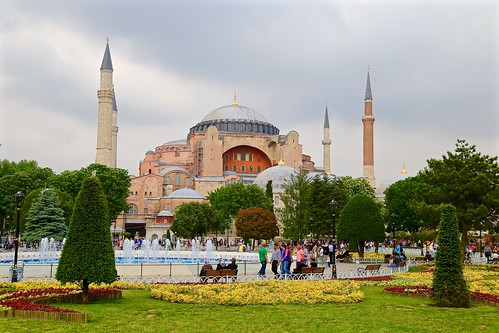
First a Church, then a mosque, now a museum, the Hagia Sophia set the trajectory for many buildings in the former city of Constantinople. Our visit there, under scaffolding and surrounded by tour groups carrying flags and wearing matching tee shirts, also set the trajectory for our two weeks in Turkey.

Don’t get me wrong. Turkey’s history, architecture, and natural landscapes were profound to witness up close. But after spending a year blazing our own path, being on the tourist track left the kind of taste in my mouth only trounced by a swig of raki, mixed with water, of course.
The Hagia Sophia’s steep entry fee was worth it, for it illuminated a Turkey that many would argue no longer exists. Despite converting Emperor Justinian’s grand church into a mosque in 1453, Mehmet the Conqueror allowed much of the Christian art, including mosaics of Mary and Jesus, to remain.

The Christian art that was removed was done so with respect, and donated to Churches around the world. We were left wondering whether the same would have occurred today.
The exterior of the Hagia Sophia stands in contrast to the Blue Mosque, built in the early 17th century. For a religion and culture that values humility, it was curious to see such a display of architectural splendor, strategically positioned across from the rather bland exterior of the Hagia Sophia.
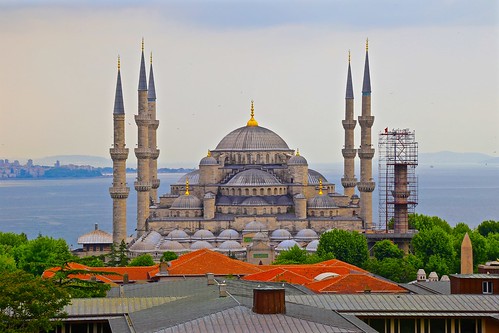
Though if you want true excess, you’ll want to visit the Topkaki Palace, as we did on our second day in Istanbul. From kitchens with 20 chimneys to daggers that take your breath away despite not coming close to your throat, the former living quarters of Istanbul’s sultans and their concubines, eunechs, and slaves is as paradoxical as the rest of this modern city, where prayers blared from minarets are far more common a sound than the honking of cabs.
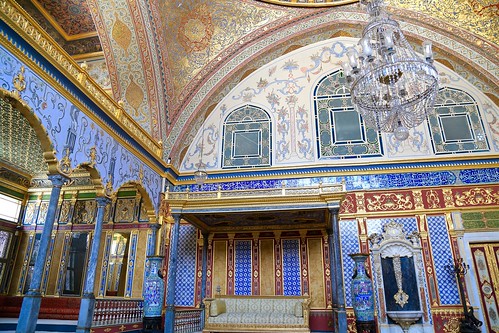
The sultans were modest—in their own way. “They sat on cushions on the floor,” said a Russian tour guide to his group, as he pointed out the hidden window where the Sultan would eavesdrop on the discussion of his guests. It’s true that the decor in this Palace was nowhere as gaudy as that of the Grand Palace in Bangkok, but the mosaic-covered halls, the marble terrace, the dishes imported from China, and the sumptuous Harem don’t exactly scream “humble.”

Neither do the riverside palaces on the Bosphorus, best explored through a dirt cheap river boat cruise with $3 fish sandwiches and sour turnip juice from the fish guys on the pier.
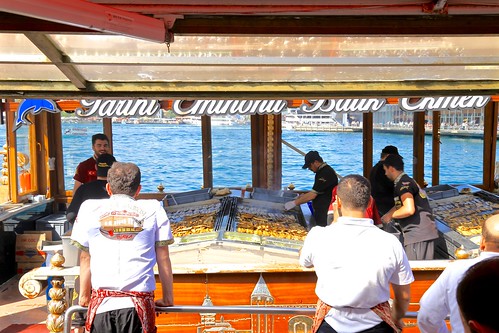
Trust us, buy the juice. Throw some lemon juice and salt on the fish, and watch out for the bones as you bit down.

If you purchase the additional audio tour, you’ll have a chance to learn all about the mansions that line both sides of the Bosphorus, but nobody will judge you if you’re just there for the selfie as you totter between Europe and Asia.. (Forgot your selfie stick? You can buy one on every corner!)

You may want to spend the following day haggling at the Grand Bazaar, though with so much hassling, haggling tends to lose its appeal.
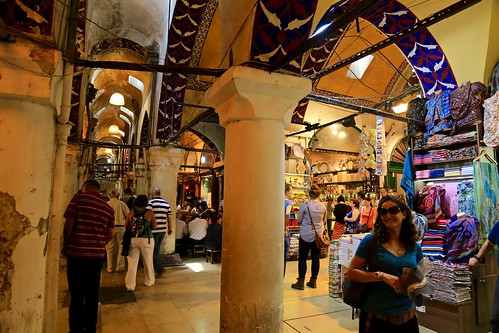
If you’re into being pampered, try out a traditional hamam, which is something of a wet sauna and bubble bath in one. We did ours at Suleymaniye Hamam, on the same marble slab as Salesman the Magnificent! As expected, the surroundings were more impressive than the scrub or massage, but those on their own were worth the cost of admission.
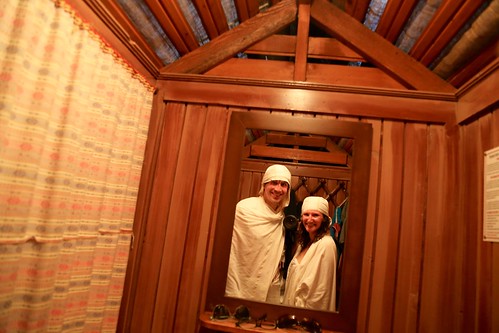
If you have more than two days in Istanbul, make time for the Basilica Cistern, which will ensure that you’ll never look at a well the same way again. Built by Emperor Justinian in 532 to provide drinking water to the Great Palace, this underground cistern has 336 marble columns, two of which are ringed by Medusa’s snake-covered head. It’s both eerie and calming, especially for those of us who spend chaotic days searching for symmetry.
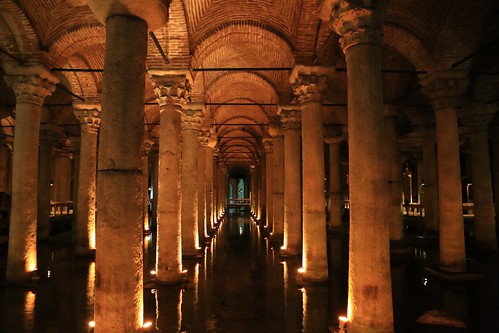
If you’re looking for more Byzantine art, make the detour to Chora Church. Most tourists opt for a cab, but we jumped on a bus, which the driver was too nice to charge us for. Like most everywhere in Istanbul, Chora was under construction, which meant the nave was off limits. Still the mosaics in the outer halls were impressive in their detail and storytelling. We particularly enjoyed the one of Jesus turning water to wine at a wedding and the central image of Theodore Metochites, the poet who commissioned the Church, handing the building to Jesus.
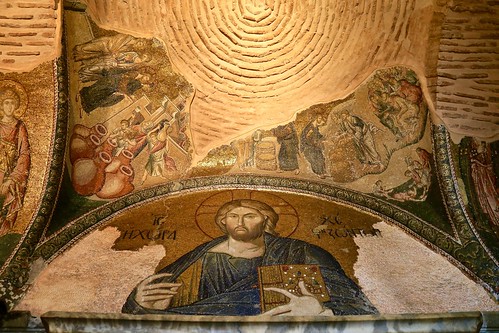
There’s a different Istanbul after dark, especially in Beyoglu across the Galata Bridge. You’ll see fewer headscarfs and more designer handbags, though that doesn’t preclude both occurring simultaneously. With many of the outdoor drinking spots shut down by the government a few years ago, this area seemed to have only a semblance of the free spirit attitude we’d expected. Still, it was as much new Istanbul as you could ask for, the one place where Western women in shorts ate brunch and shopped in trendy boutiques alongside Turkish women heading to work in outfits ranging from secular to conservative.

Women working. That was something we didn’t see much of throughout Turkey. The vast majority of the people working in hotels, restaurants, and shops were men. When women were out, they seemed to accompany secularly dressed husbands, not each other. It was only at fancier restaurants like Lokanta Maya that we saw groups of women hanging out, a la Sex and the City. It was at places like that that some of Istanbul’s paradoxes fell away—as did its appeal.
But at the end of the day, the question isn’t whether Istanbul is worth visiting. It’s what kind of Istanbul will you find during your stay?
If you go
Our stay at Hotel Nena in Sultanahmet was lovely, aside from the unfriendly airport pickup. The views from the breakfast terrace are perfect and the location ideal for exploring historic Istanbul. Prices range depending on season, but there are typically specials for stays of three nights or longer.
More Istanbul
Want to see more of Istanbul? Check out our Istanbul photo tour!
Have you ever been to Istanbul?
Let us know in the comments!
Comments